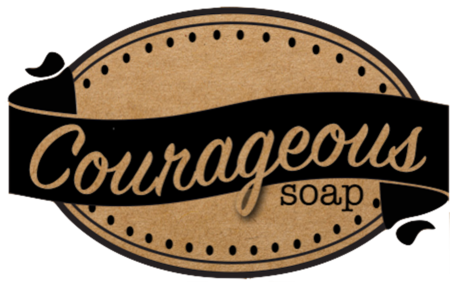I like cake.
There isn't a more sophisticated explanation - "liking cake" really was the reason I entered Amy Warden's April Soap Challenge: Mirror Glaze Technique.
Most artisan soap designers have been told, "OMG - that looks good enough to eat!" when customers view especially ornately designed products. This isn't surprising - many soaping techniques have baking origins.
Here's the basic process for this one (feel free to try this with edible ingredients and lmk how it goes ;) ):
This technique starts with a base "cake" of soap. I tried a few different shapes - was especially drawn to the flower-shaped molds because the look of glaze can be psychedelic-y anyway. I also used straightforward, round molds as I wasn't sure how easy it would be to work with the flower's multiple side-surfaces when eventually pouring the glaze (see video, a little ways below, to understand this).

Using a tradition blend of palm-free oils with some cocoa butter (a nod to my #useitchallenge), I also put a bit aside for color enhancement. Why? Doesn't the glaze provide enough design? I figured that after the glaze design wore down (through use), I still wanted a cheeky, mod soap revealed underneath - we aren't barbarians for chrissakes. Scented with a groovy combo of cedar wood/sweet orange/ylang ylang/patchouli essential oils, we were ready to GO.
As for those curious sticks? You'll see.

After setting for 24 hours, the base soap is freed from the molds and positioned on "stands" made from disposable cups with a small hole in the top. I carefully worked the skewers through the top holes to keep the soap steady for the following steps.

Now the really FUN part: adding color. I first coated the "cakes" with an uncolored, slow-tracing recipe (no added scent), then alternated bright cosmetic micas and titanium white. I had to spray 91% isophrophyl alcohol between layers to discourage soda ash (mixed results - still would need steaming, as it turned out).
Here's a quick video showing the fun part:
And here's what the soap looks like immediately after pour:


Admittedly messy at this stage, but very shiny!

This is what the bars looked like after the glaze pour, adding some sugar enhancements, spraying maniacally with alcohol, and cleaning up a bit:

Now to cure for another 24 hours before steaming any residual soda ash.
And the end result:

Good enough to eat? Resist the temptation, friends. But these should be a groovy addition to the bath.
(Soaping pals, did you end up doing this Mirror Glaze technique? What did you think of the process?)
(Soaping pals, did you end up doing this Mirror Glaze technique? What did you think of the process?)
Thanks again, Amy for a fun challenge! But now, alas, I have an overpowering yearning for cake...
- L
.

Leave a comment